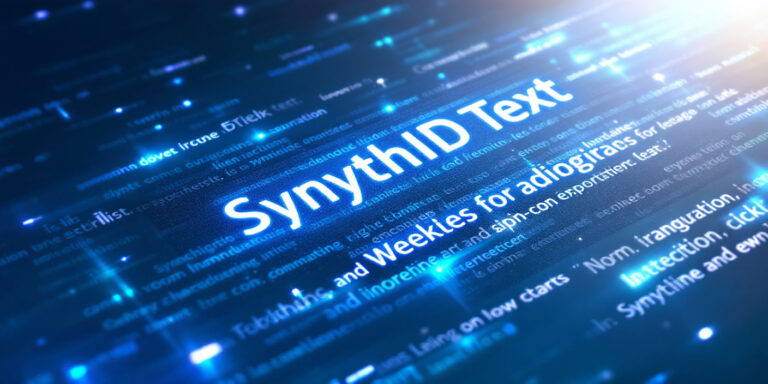Google has publicly launched its SynthID Text, an AI watermarking tool designed to help developers and businesses identify AI-generated content. Now accessible via Hugging Face and Google’s Responsible GenAI Toolkit, SynthID Text aids detection efforts without compromising the quality and accuracy of the text. However, the tool does have some limitations, particularly with short text or significantly modified content.

Google’s SynthID Text – Key Points
- New Access to SynthID Text
- SynthID Text is now freely available through Hugging Face and Google’s Responsible GenAI Toolkit. By open-sourcing this tool, Google aims to support developers and companies in recognizing generative AI text.
- This move is part of a broader push for transparency in AI content, with forecasts suggesting that by 2026, up to 90% of online material could be AI-generated.
- Google demonstrated SynthID Text’s reliability in large-scale tests, maintaining content quality across 20 million responses, underscoring its potential for wide adoption.
- Functionality and Mechanism
- SynthID Text embeds a watermark by adjusting the probability distribution of words generated by AI models. This watermark, embedded as a pattern, enables detection of AI-generated text versus human-written content.
- Google’s Tournament Sampling method adds these signatures without affecting the readability or style of the generated text. Integrated with Google’s Gemini models, SynthID preserves quality, speed, and accuracy even if the content undergoes minor modifications.
- Limitations to Be Aware Of
- Challenges with Short or Factual Texts:
- The tool is less effective with shorter text, translated content, or answers to straightforward factual prompts. Since factual responses often have limited variation, embedding watermarks without altering accuracy is more complex.
- Vulnerability to Rewriting:
- When content is significantly paraphrased or rewritten, SynthID’s watermark may weaken, reducing its detection effectiveness.
- Challenges with Short or Factual Texts:
- Competitive Landscape and Regulatory Trends
- Google is one of several companies investing in watermarking technology, with OpenAI pursuing similar efforts though facing some delays. This trend reflects rising concerns around AI-generated content and the limitations of current AI detectors, which may wrongly flag generically written text.
- Regulatory measures are also advancing; China has implemented mandatory watermarking for AI content, and California is considering similar legislation. These moves aim to counter the potential spread of misinformation and synthetic content, with projections suggesting AI-driven material could make up 90% of online information by 2026.
Why This Matters:
The public release of SynthID Text represents a significant step toward addressing transparency as AI-generated content becomes increasingly prevalent. With projections pointing to synthetic content dominance by 2026, tools like SynthID Text can help distinguish between human and AI-generated material, providing critical support to both businesses and governments in tackling challenges related to misinformation and content authenticity.
Research shows AI chatbots can reduce conspiracy theories by providing personalized, evidence-based refutations, with long-lasting effects.
Read a comprehensive monthly roundup of the latest AI news!
The AI Track News: In-Depth And Concise
Sources
Scalable watermarking for identifying large language model outputs – Nature, 23 October 2024







